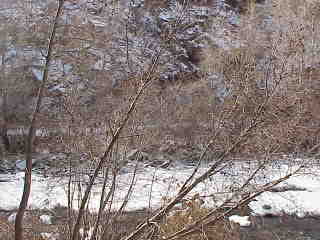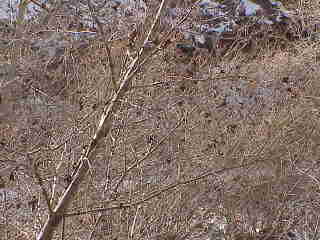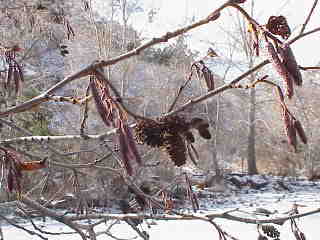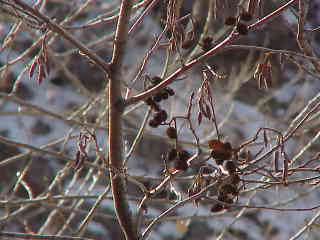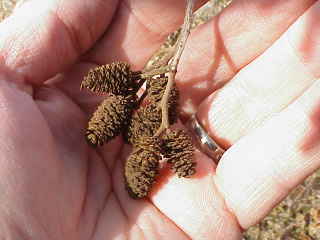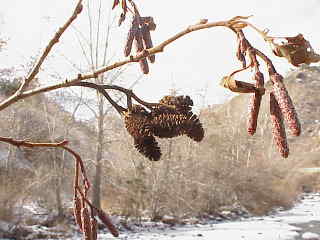First you have to find a Mountain Alder Tree (or sometimes called a Thinleaf Alder) It is small tree or coarse shrub, often occurring in clumps is found in mountains, mid to subalpine elevations. Always in wet, nutrient rich areas such as lake, pond, swamp or stream edges. They can vary in size from 2 to 20 feet in height.The "pine cones" are actually seed cones on a short stalk; the seeds or nutlets have very narrow wings They to have flosers that are long (3 to 4 cm), drooping catkins (male), and woody, brown, short cones (female), that are produced in the fall and stay on the tree until spring. Many do fall off during the winter. And as they dry out, they open up to the point that many of them can not be used. I like to pick them in November and December in Colorado.
The leaves are thin, oval-shaped with a rounded or blunt tip. They are shallow, wavy lobed and double toothed. Their color is green with a pale and hairy underside. They remain green through most of the fall like most alders, but then turn, dry out, and fall off the tree in October.
The bark is yellowish-brown and fairly smooth. It is a very hard wook with no or very few modern day uses. Its early uses were wood: bows, snowshoes, smoking and drying salmon and meat, eating utensil and dishes, source of dye and hide tanning
You can ususaly find them on the banks of mountain streams, right at the waters edge. Look for them in the spring and summer and remember where they are. They will have a leave almost like a peach tree leaf. The "pine cones" will be green. See the photo at:
http://www.wenet.net/~rocco/tree/mtnalder.html
To find them in the winter, look for a clump of tall thin trunks, about 2 to 4 inches, and rarely over 6 inches in diameter. The leaves will be gone, but a few yellowish, leaves will usually be hanging on. Look close and you will see small dark brown clusters. Closer inspection will reveal that these clusters are the small "pine cones". I drive down the roads next to streams and look for these brown clusters on baren short bushes and trees. When I see one I pull off when it is safe and look closer.
To collect the cones you only need a paper or plastic bag. I just pinch off the cluster in such a way that they will break off at the natural place. They will break off easily.
This is a sample of a cluster after it has bee picked. Notice that most the seeds have fallen out. I shake these, some in the stream and some on the bank to distribute as many seeds as I can.
The rest of the seeds are collected in my shop and then I sprinkle them back along the streams.
